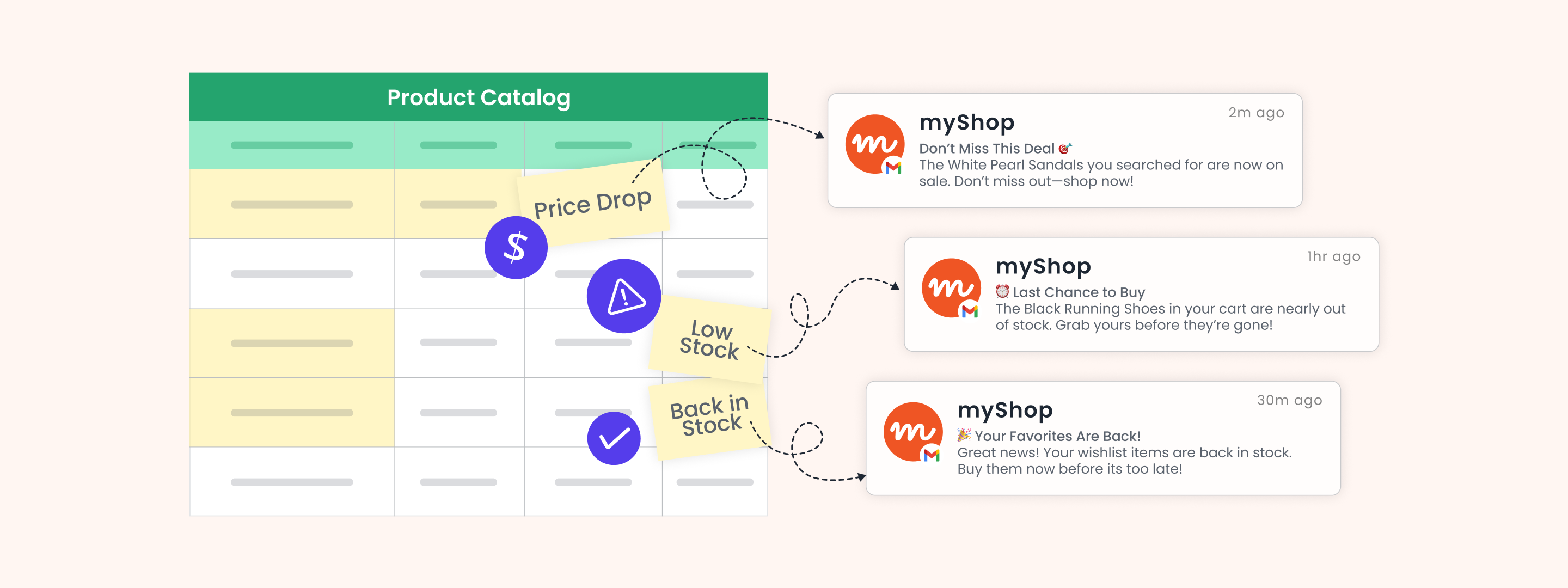For Anya in the US, shifting to a new city for work is a regular occurrence. She packs up her home every couple of years and resettles in a new location. When discussing the pros and cons of this constant movement with her, she mentioned how finding a home is the least inconvenient part of the process. She looks up a new apartment, takes a virtual tour, and even completes the necessary documentation and other formalities for renting the apartment, all online, without even stepping foot in the new city. The ease of access to real estate in the digital arena is a game-changer for her. Renting a home has gone from being a hassle to a process that she finds easy, even pleasurable.
A similar transformation in real estate is happening in India. In 2022, private equity investments in Indian realty stood at USD 3.4 billion, much in commercial office assets. That figure is only expected to grow in 2023. Similarly, the push for digitalization backed by government initiatives and industrial demand indicates a surge in the demand for data centers. What is significant is that the days when the real estate industry relied on traditional marketing tactics to attract and retain buyers and sellers are gone. There is increased reliance now on digital strategies. Multiple portals now facilitate the buying, selling, or renting of property online, be it residential (B2C) or commercial office and retail properties (B2B). Large developers use digital platforms to reach their customers; the results are already positive. Online portals have also been shown to increase the recall value of properties, leading to increased sales.
The innovation in the real estate digital terrain is still in a nascent stage, indicating huge scope for development. A critical aspect of the same is lead engagement and nurturing.
Understanding Digital Lead Engagement and Nurturing
Lead engagement and nurturing comprise a series of actions to build and maintain a meaningful relationship with potential clients, i.e., leads who have expressed interest in your real estate services. These activities span from the initial onboarding to guiding them through various touch points along the user’s journey to converting them into loyal clients. Earlier, most of this happened in person. However, the proliferation and acceptance of digital tools and platforms have dramatically altered how real estate professionals interact with their leads. Online listings, virtual tours, social media, email campaigns, and interactive websites have launched new avenues for engagement.
While a lot of ease and convenience are built into the process because of this digitalization, there is also a need to ensure that the customer feels cared for and listened to. Conveying empathy and communicating seamlessly over virtual/digital platforms is a challenge. This shift has led to an increased need for personalized and targeted approaches to capture and maintain the attention of leads.
In this piece, we shall explore the exciting opportunities for lead engagement and nurturing digitally and provide valuable insights and actionable tips for success.
Strategy #1: Crafting Compelling Content:
Great content is at the heart of successful lead engagement and nurturing strategies. Content must be high-quality, informative, and relevant to engage leads successfully. It must answer any questions the leads may have, address their concerns, and reassure them.
This content can take various forms starting from:
An Engaging Website: A website is usually the first point of contact for a user with a real estate company. In an age where users can instantly turn to search engines on their mobile phones for information, it is necessary to have a user-friendly, mobile-responsive website optimized for local and relevant real estate keywords to improve search engine visibility. Websites should be attractively designed, showcasing property listings, high-quality images, and detailed property information. Clear calls-to-action (CTAs) for lead generation, such as “Schedule a Viewing,” Get a Callback,” or ” Download Property Brochure,” should be included.
Housing.com, for instance, currently ranks as the top website in the category. It has an attractive landing page that offers information and options without overwhelming the user.

Educational Blog Posts: Blog posts that provide insights into the local real estate market, buying/selling tips, and investment advice are valuable to leads looking to real estate professionals for reliable advice and guidance. Thought-leadership articles, written in a confident tone, position you as an expert in your field and establish trust.
99acres is one of the premier websites for buying and selling properties in India, and one way they engage leads on their website is by prominently featuring links to articles in their “Knowledge Centre.” The Knowledge Centre allows leads to access to the thoughts and opinions of experts in the field.

Virtual Tours and Videos: Visual content, such as virtual tours and videos, is a trump card for real estate businesses, especially in the post-COVID-19 era. It is highly engaging and allows leads to envision themselves in a property. Leveraging the power of such content to showcase properties, conduct virtual tours, and share informative videos about the real estate process is a powerful and effective lead engagement strategy.
Magicbricks, for example, is a true pioneer in employing visual content. It introduced the ‘Experience Center,’ an innovative kiosk that allows developers to display their properties using a VR gadget.
Similarly, Homebazaar.com uses a fascinating tool called Street View to allow users to get an interactive 360O experience of the neighborhood.

Email Newsletters and Drip Email Campaigns: Informative and personalized emails that keep leads updated on market trends, new listings, and industry news can cater to their needs and preferences. This means that leads are more likely to reach out to you because you are at the top of their mind rather than an unknown real estate professional. For example, Imagine you’re a commercial real estate firm targeting businesses looking to expand their office spaces. Instead of sending generic emails, you create a personalized email campaign featuring case studies highlighting the successful office expansions your firm has facilitated.
Social Media Engagement: Social media platforms are one of the most powerful lead engagement tools. Social media savvy millennials, and Gen Z are increasingly becoming property buyers. Social media is a prudent way to engage and nurture leads. Social media platforms can be utilized to share property listings, behind-the-scenes glimpses, client testimonials, or valuable industry insights and engage with leads via comments and messages. Such interaction communicates a willingness to build deep relationships and allow companies to get valuable feedback.
For Mahindra Lifespaces Developers, nearly 20-30% of the sales come from digital channels, including social media, which they believe is an important source to gain insights into areas of improvement. Information gathered here forms an important part of their overall improvement plans.

Strategy #2: Leveraging Data-Driven Hyper-Personalization:
Generic communication cannot capture leads’ attention in the crowded digital landscape. The key to effective lead nurturing is personalization based on data. Here’s how to introduce data-driven personalization into your strategy:
Segmentation: Categorize your leads into different segments based on factors such as location, budget, property type preferences, and engagement levels.
Here’s how segmentation categories might look like for your real estate business:
-
- Demographic Segmentation:
Age: Targeting first-time homebuyers (typically younger) versus retirees looking to downsize.
Income Level: Tailoring listings for luxury buyers versus middle-income buyers.
Family Size: Recommending larger homes with multiple bedrooms for families versus condos or studios for singles.
-
- Geographic Segmentation:
Neighborhood Preferences: Urban downtowns, suburban neighborhoods, or rural properties.
Proximity To Amenities: Near schools, public transportation, parks, or shopping centers.
-
- Psychographic Segmentation:
Lifestyle Choices: Eco-friendly homes, properties near nightlife or cultural hubs, homes in quieter or family-friendly neighborhoods.
Investment Mindset: Buyers looking for turnkey properties versus those willing to invest in fixer-uppers.
-
- Behavioral Segmentation:
Type Of Purchase: First-time buyers, investment properties, vacation homes.
Purchase Readiness: Buyers who are ready to purchase immediately, versus those just starting their search.
Response To Previous Campaigns: Engagement with email newsletters, property viewing history, or attendance at open houses.
-
- Benefit Segmentation:
Amenities Sought: Pools, home gyms, large yards, balconies, or proximity to certain institutions.
Home Specifics: Preferences like open-floor plans, high ceilings, or modern kitchens.
-
- Firmographic Segmentation (for commercial real estate):
Business Type: Retail, manufacturing, office spaces.
Size Of Business: Square footage needed or number of rooms/sections.
-
- Technographic Segmentation:
Platform Use: Engaging leads based on their preferred platforms, like Zillow, Realtor.com, or local real estate websites.
Device Type: Ensuring listings look good on both mobile and desktop for tech-savvy clients.
Such segmentation then allows you to tailor your communication to each group’s specific needs. For example, geographic segmentation can target leads looking for properties with location-related specifications, such as beachfront property or proximity to public transport. Generational segmentation is another relevant layer of segmentation that can inform and aid your efforts at engaging and nurturing leads.

Behavioral Tracking: Utilizing tracking tools to monitor online behavior of prospect- the properties they view, the pages they visit, and the content they engage with, can help generate a lot of data about each individual. This data can then be analyzed to understand their interests and intentions, enabling you to send relevant content. For example, imagine that you operate a B2C real estate platform that connects individual users with residential properties. By analyzing leads’ browsing behavior, you notice that a particular user has been searching for rental properties with specific amenities. Your next step would be to send them targeted emails showcasing apartments that align with their preferences.
Automated Lead Nurturing Workflows: Setting up automated email workflows that trigger based on lead actions is a great way to stay in touch with a lead even after they are not actively browsing your website/app. For example, if a lead views a specific property, you can automatically send them more details about that property or similar listings. Or when a lead signs up for a free virtual tour, you set up an automated workflow. This workflow could include personalized onboarding emails, video tutorials for how to make the best use of the virtual tour features, or invites to live Q&A sessions. This automated nurturing process educates your leads about the value of the service/tool while providing support when needed.
For Magicbricks, leveraging data to deliver hyper-personalized and digital experiences has certainly paid off. Their data model, built on 75 attributes related to user behavior, has helped them better understand their customer. This has allowed them to offer solutions based on the user’s needs, increasing accuracy to 60%. Their model also allows them to predict whether a buyer will fulfill their requirements on Magicbricks and the time they will take to close a deal, enabling the sales team to pitch the right leads to owners.
Strategy #3: Enabling Seamless Communication:
One of the biggest challenges in the digital age is ensuring seamless communication.
One way to ensure that your message reaches leads and keeps them engaged is data-driven hype-personalization. However, consistency and sustainability of communication are just as important when nurturing leads through the process.
Here are some ways to communicate effectively with leads:
Omnichannel Engagement: Engaging leads across multiple digital channels can increase your visibility and impact. Omnichannel engagement provides a seamless and tailored experience for customers across all touchpoints, when they engage with your brand. Unlike multi-channel, where different channels may operate independently, omnichannel ensures that these channels are tightly integrated, ensuring a cohesive and highly personalized customer journey. This translates to consistent experiences in terms of messaging, tone, design and more, across all channels.
In addition, omnichannel engagement also facilitates effective ‘moment marketing‘.
For example, Mahindra Lifespaces chose the Indian Independence Day to drive home its messaging about sustainable and green architecture using social media posts.

Real-Time Communication: In the world of instant messaging, leads don’t want to be the recipients of one-way communication directed at them. Instead, they want reciprocal interactions and expect rapid responses. Ensuring that inquiries from leads are addressed promptly, whether through emails, contact forms, or social media messages communicates reliability. A particularly powerful tool that aids such real-time conversations is WhatsApp. The picture below shows how Adani Realty provides multiple channels for two-way conversations.

Live Chat: Another feature that enables seamless conversations with leads is a chatbot or a live chat feature on your website. A feature like this can provide immediate assistance to visitors. This fosters a sense of trust and accessibility, enhancing the leads’ experience.
For instance, here is the live chat feature on the HomeBazaar website.

Virtual Consultations: Offering virtual consultations to discuss clients’ needs, preferences, and property requirements is a great way to remotely provide the human touch. This personalized interaction communicates your interest in the leads’ journey and willingness to form meaningful relationships. It can also help clarify any doubts they may have and reduce opportunities for miscommunication.
Webinars and Workshops: Hosting online events, such as webinars and workshops, that offer valuable insights into the real estate market, buying/selling strategies, and investment opportunities. Such events position you as a knowledgeable resource and attract engaged leads. For example, in 2020, during the pandemic, 99acres used a fortnightly webinar series to reach out to customers and clients and offer them correct information and reassurance. The series involved stakeholders from all sections of the industry and included panelists who were industry experts. As a result, even during lockdowns and social distancing, over 1.5 lakh homebuyers, investors, and sellers were reached through the live feed of the interactive webinar on Facebook and Zoom.
Strategy #4: Monitoring and Adaptation:
The foundation for all digital lead engagement and nurturing initiatives is continuous monitoring, using Web Analytics and Customer Relationship Management (CRM) software, and using the data derived from the same to adapt to changing circumstances. Regularly analyzing your engagement performance and nurturing efforts through metrics like open rates, bounce rates, click-through rates, conversion rates, and A/B testing, etc., is crucial. Insights from the same can be used to refine your lead engagement and nurturing strategy and pivot as needed. For example, a company can analyze the behavior flow of visitors to their website. This helps them understand visitors’ paths and where they drop off most frequently. If many visitors abandon the site after viewing property listings, they may need to refine the listing details or enhance the user experience.
Strategy #5: Building Trust Through Consistency and Social Proof:
Consistency in your content strategy or your efforts at providing a personalized user experience is the key to building trust in lead engagement and nurturing. When leads can rely on you to provide accurate and relevant information, they are more likely to choose you.
Another equally important way to build trust is to offer social proof. When leads can see testimonials or reviews from other users, it reassures them that they are in safe hands. In essence, they work like referrals by validating your expertise and instilling confidence.
For example, NoBroker shares video testimonials and written reviews by satisfied customers on the website.

BoxMySpace – A WebEngage Impact Story™:
BoxMySpace is a great example of how real estate brands can generate, engage, and nurture leads digitally. BoxMySpace provides customers with secure storage options (on rent) and businesses (pay per use). BoxMySpace wanted to convert anonymous users on-site into leads and nurture these leads to push them lower down the conversion funnel. To achieve the same, BoxMySpace devised a comprehensive lead nurturing campaign. They utilized WebEngage’s Journey Designer to create an automated workflow for nurturing leads.
And the results speak for themselves!
During the first six months of running a lead generation survey on its website, BoxMySpace collected 1.2K leads. And automating the lead nurturing process immensely helped them convert cold leads to sales-ready leads, translating into more revenue.

Conclusion to real estate lead engagement and nurturing
There is no denying that the future of real estate is digital. We are just beginning to see the impact of AI on the industry, and we can certainly look forward to more rapid transformation in the days to come. With consumers and businesses increasingly relying on digital tools and platforms to acquire information and conduct transactions, it is necessary to adapt your lead engagement and nurturing efforts to ensure a competitive advantage.
With its expertise in web analytics, omnichannel engagement, personalization, and more, WebEngage can help you save time and resources and ensure a friction-free lead engagement and nurturing process.
Request a demo to explore what WebEngage can do for your real estate business.


































 Ananya Nigam
Ananya Nigam
 Harshita Lal
Harshita Lal
 Prakhya Nair
Prakhya Nair